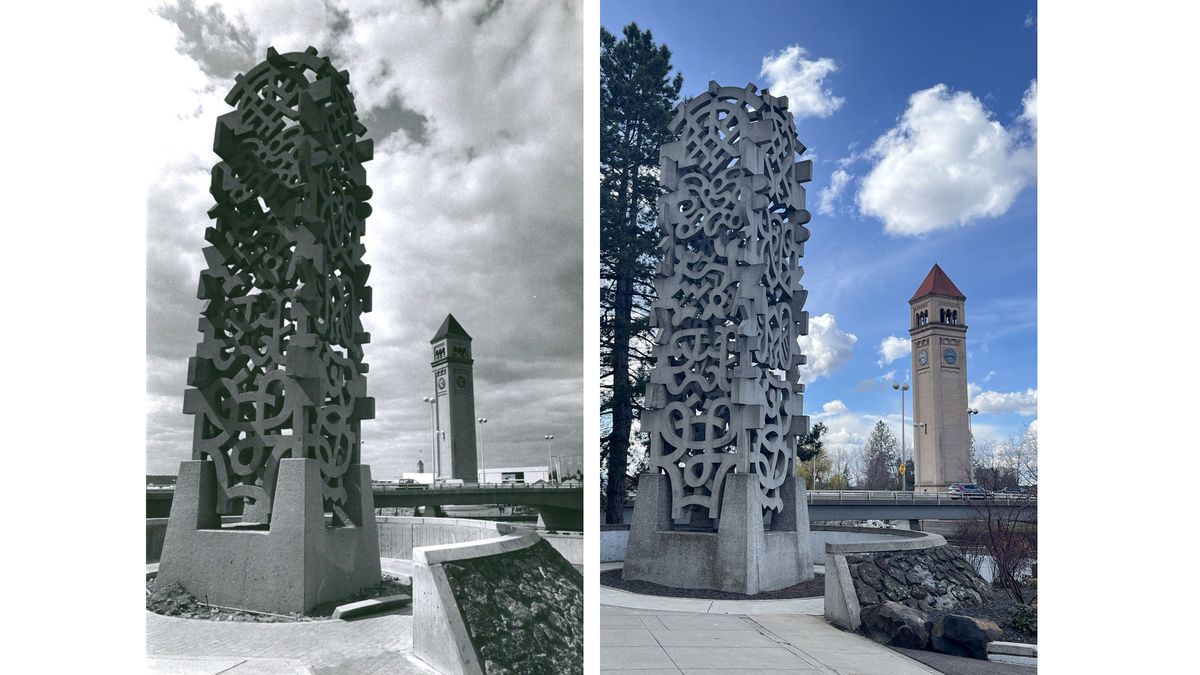Then and Now: Balazs sculpture for Expo ’74 remains a landmark

Although it took hundreds of architects, engineers, designers and builders to create Expo ’74, the artistic vision of artist Harold Balazs was everywhere at the world’s fair.
Anonymous donors paid to commission Balazs to create a 40-foot tower of precast concrete interlocking panels for a prominent spot beside the new opera house, Washington’s state pavilion, about 20 feet from the Spokane River’s south shore.
Architect William H. Trogdon said Balazs’ abstract style, combined with the large scale of the piece, made it a perfect accent to the sheer 90-foot walls of concert hall, which today is called the First Interstate Center for the Arts. Balazs never titled the sculpture and it’s often just called the “Lantern” because it was lit from within, similar to decorative lanterns found in Japanese temples and gardens.
Balazs moved to Spokane with his family in the 1940s and received a fine arts degree from Washington State College, graduating in 1951. He and his wife, Rosemary, married in 1950. They had three children.
Balazs started selling his work in college, including his handmade enamel jewelry. He and some friends formed a club to auction off watercolors and drawings.
But his large scale works, both enamel-on-metal and sculptures of metal and concrete, attracted interest and commissions from architects and art patrons around the region.
His 60 years of work is ubiquitous in Spokane. Large enamel panels are found on the Lincoln Building, his metal and concrete sculptures are found in many churches and children play under the spray of the Rotary Fountain, created with Bob Perron in 2005, in Riverfront Park on hot summer days.
Balazs’ 1978 Centennial Sculpture is mounted midstream in the Spokane River in Riverfront Park.
Ben Mitchell, curator of art at the Museum of Arts and Culture, summed up his contribution in 2017. “Harold’s work, over 60 years or more in the region, comprises one of the most significant, far-reaching and resonant examples of a life lived in dedication to art, aesthetics and the humanities imaginable,” he said. Mitchell had curated a Balazs career retrospective at the Northwest Museum of Arts and Culture in 2010. “He is a giant, a titan, and an example to us all.”
“Harold Balazs: “Leaving Marks,” and exhibition of 30 mixed-media works is on display at the Northwest Museum of Arts and Culture until June 2.
Balazs died in 2017.